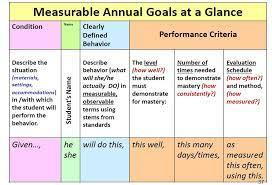School is back in session after an interesting 18 or so months at home. IEPs and goal development are an important area of focus as our students return to school. Developing and implementing measurable and observable goals is of paramount importance right now, as we wish to establish a reliable and informative way to chart our student’s progress moving forward. And what better time to hone in on this concept after an unexpected life and school reset?
What does measurable and observable mean in the ABA world?
The term “measurable and observable” is an important tenant for any program/goal development in ABA programming (and at school). Essentially, the goal must be measuring something that you can SEE, HEAR, TOUCH or otherwise directly observe and record. It must be what the student is doing and not what the teacher is doing to effect this change. A common mistake is to write a goal around earning tokens (a teacher behavior) vs. exactly what the student needs to be doing to earn these tokens.
Ensuring that a goal is measurable means that it utilizes a measurement system of some form. Does the behavior have a clear beginning and end? Are we measuring the passage of time? Can it be measured directly, such as in frequency, or how many times it occurred?
How can I make sure that my IEP has measurable and observable goals?
Luckily, legislation revolving around IEPs and goal development actually requires that all goals are written in a measurable and observable form.
For more information on the legislation, you can visit Virginia DOE
There are many helpful planning tools that school can use to develop goals, but here is one that I like:

Are your child’s IEP goals written with this much clarity and detail?
What are the benefits of having measurable and observable IEP goals?
- It holds the teachers and schools accountable for working on very specific skills that have been identified as imperative for the benefit of the student.
- It holds the teacher and schools as to who will be accountable for taking and reporting this data.
- When data is taken in such a detailed manner, data-based decisions will be easier to make. For instance, is the student nearing mastery of this goal (70% accuracy) or is nowhere near mastery (20% accuracy). Did the student only exhibit this skill one time, or is he doing this consistently across days and weeks? Are they able to do it in one setting, but not in across all settings?
- It is easier to identify what the next steps or goals will be. Once the goal has been mastered according to this very detailed criteria, the team can then decide if they want to increase certain aspects of the criteria such as number of settings, accuracy criteria, or if the student is ready to move on to a different goal.
References:
Behavior Analyst Certification Board. (2017). BCBA task list (5th ed.). Littleton, CO: Author.
https://www.doe.virginia.gov/special_ed/iep_instruct_svcs/stds-based_iep/stds_based_iep_guidance.pdf
